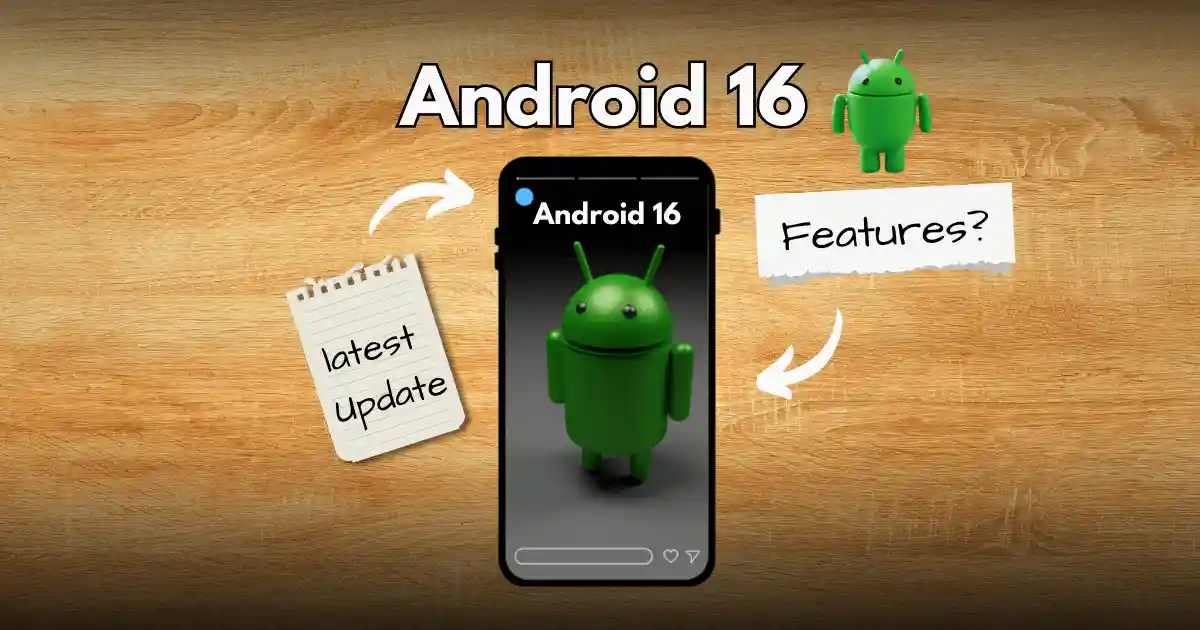In this month June 2025, Google will deliver the stable Android 16 update its earliest major release in years revealing an expressive redesign, tighter AI integration, and robust security enhancements across phones, watches, and beyond. Unveiled at The Android Shows new Edition in early May, Android 16 debuts Material 3 Expressive, Live Updates, and replaces Google Assistant with Gemini AI, while bolstering on-device protections and developer tooling for a unified, intelligent ecosystem.
Android 16 Release Date:
Developer Previews & Betas
Android 16’s preview and beta program kicked off in late 2024, with Platform Stability reached by Beta 3 in March 2025—locking in APIs and behaviors for final app testing. A fourth beta (Beta 4.1) in May polished UI animations and haptic feedback ahead of the public rollout. (official site)
Stable Launch
Google has confirmed that the stable Android 16 update will arrive in June 2025—potentially as early as June 3—first on Pixel devices, marking a shift from the traditional October schedule.
OEM Rollout
Following Pixel’s June release, Samsung flagships and mid-range models will receive Android 16 “this summer,” with OnePlus, Oppo, and Xiaomi rolling out updates in phased waves.
Key Features
Material 3 Expressive Design
Android 16 introduces Material 3 Expressive, a dynamic theming engine that adapts colors, typography, and animations to user wallpapers and preferences for a personalized, premium feel. System UI elements—like the volume slider—feature slimmer handles and repositioned icons, while forced dark mode can now be applied universally across apps.
Live Updates (Lock-screen Activities)
Borrowing from Apple’s Dynamic Island, Live Updates pins ongoing notifications—such as navigation, ride-hailing, and deliveries—to the lock screen and status bar, offering glanceable, standardized UI for third-party apps.
Gemini AI Integration
Google Assistant is being phased out on many surfaces, replaced by Gemini, an advanced multimodal chatbot with conversational commands across Wear OS, Android Auto, Google TV, and future Android XR headsets. Gemini also offers select offline capabilities for on-device AI tasks, reducing latency and preserving privacy.
Security Enhancements
Android 16 strengthens on-device defenses with AI-powered scam and robocall detection, safeguards against unauthorized system changes during calls, and factory-reset protections that secure one-time passcodes post-reset. Advanced Protection Mode expands to Pixel devices, offering Google’s strongest mobile security for at-risk users.
Developer & Under-the-Hood Improvements
- Compatibility Mode ensures apps built for older memory page sizes run seamlessly on devices with newer architectures.
- Work Scheduling Optimization To avoid missed executions after app resumes, improving background task reliability they introduce scheduled update.
- Battery Health UI surfaces diagnostics and usage trends in Settings, helping users monitor long-term battery performance.
Wear OS 6 & Cross-Device Consistency
Wear OS 6 adopts the Material 3 Expressive overhaul—yielding smoother animations and up to 10% battery life improvement—while aligning visual and functional paradigms with Android 16 on phones for a cohesive ecosystem.
Supported Devices
- Google Pixel: Pixel 6 and newer begin receiving Android 16 in June 2025.
- Samsung: Galaxy S and Note series to roll out “this summer” post-I/O.
- Other OEMs: OnePlus, Oppo, Xiaomi, and Vivo to announce schedules at and after Google I/O 2025.
Android 16 marks Google’s most ambitious update yet, blending an expressive redesign with ambient AI and hardened security to create an intelligent, personalized platform that spans devices—from phones and watches to cars and headsets—and sets the stage for the next era of mobile computing.








